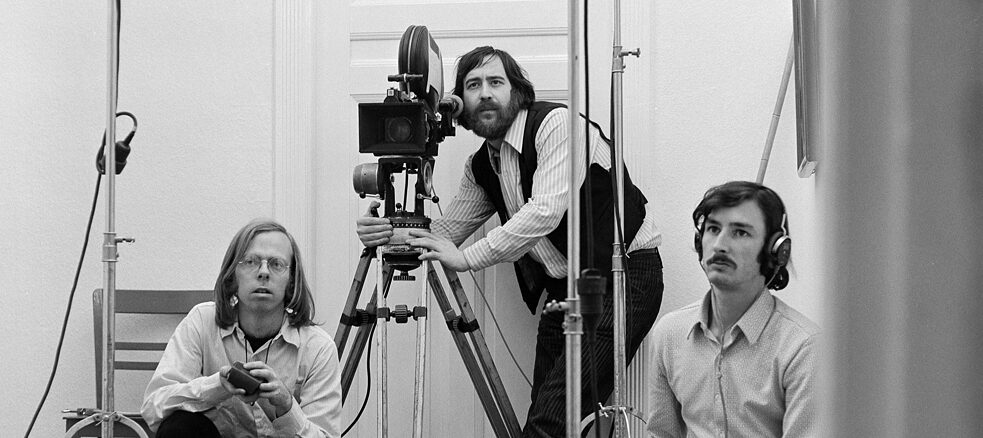Günter Peter Straschek
With a Persistent Gaze

The political turmoil of the 1960s brought his creative work as a filmmaker to an abrupt end. But by then Günter Peter Straschek had already produced one of the seminal works of the student revolts and would ultimately accomplish his life achievement as a film historian.
The legend begins with a confiscation: he spent several months working on this film, writing the script, directing the movie, editing the material. Ein Western für den SDS (A Western for the SDS) ended up as a 23-minute black-and-white short, a “socialist educational film”, or at least that’s what they call it nowadays: it shows how a young woman is mobilised as a member of the Sozialistischer Deutscher Studentenbund (Socialist German Student Union; SDS), discussing this role and the rights of women. But hardly anyone had a chance to see the film at first – the film academy seized the film reel and kept it under lock and key. Film students subsequently campaigned for them to hand it back and drew attention to its confiscation in press conferences, the atmosphere was charged and highly political. Right at the centre was the filmmaker himself: Günter Peter Straschek.
Straschek, who was born in 1942 in Graz, had already travelled around Europe and Asia by the age of 19, and had worked in a kibbutz in Israel. As well as his marked penchant for literature, he also discovered an interest in film along the way and spent two years studying at the TU Berlin film seminar before choosing a degree course in film directing at the newly founded German Film and Television Academy in Berlin. This is where he wrote his short film Hurra für Frau E. (Hurray for Mrs E), a portrait of a mother who depends on state benefits and supplements this income with prostitution. And Ein Western für den SDS was also created here – the confiscation of which not only resulted in uproar but also to the expulsion of several film students and in the end of Straschek himself.
 Filmstill of „Ein Western für den SDS“ (A Western for the SDS), 1967-1968.
| Photo (detail): © Museum Ludwig, Köln
Filmstill of „Ein Western für den SDS“ (A Western for the SDS), 1967-1968.
| Photo (detail): © Museum Ludwig, Köln
“Failing in this industry”
After being expelled from the film academy in 1968, Straschek turned his back on active filmmaking – which he described in a radio feature as “failing in this industry” – and concentrated on researching the subject. His focus was particularly on the emigration of filmmakers from Nazi Germany. How they experienced the NS regime, what influence this had on their work, when and under what circumstances they had to leave Germany. To find answers he researched in libraries and archives in Europe and America, he and his wife Karin Rausch conducted over 2000 interviews with migrants – including director Fritz Lang. The outcome was a five-part TV documentary series entitled Filmemigration aus Nazideutschland (Film emigration from Nazi Germany) in 1975 – the lifetime opus of the film historian, who died in 2009.
“Straschek’s eye is as precise as it is sensitive: a persistent gaze that sheds light on the denied past,” says a press release published by Museum Ludwig in Cologne, which first dedicated an exhibition to Straschek’s work in 2018. Then, when going through Straschek’s estate, curator Julia Friedrich stumbled across Ein Western für den SDS – a film that had been lost for decades. “In the last film can,” as she told German radio station Deutschlandfunk. She screened it in the exhibition too, this short film that had become a symbol and seminal work of the student revolts in 1968.